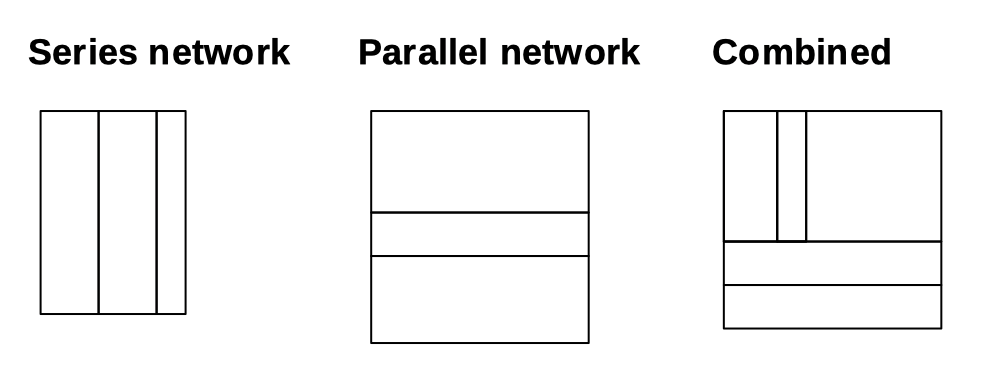Ohmaps: crossing the Wheatstone bridge
I introduced ohmaps in parts 1 and 2 and looked at some simpler examples.
We looked at parallel and series resistor networks (and combinations of those):

And I wrote this:
And not every resistor network can be shown as an ohmap – things outwith simple series/parallel nestings, like delta or Y networks.
It turns out I was a little hasty here. So how might ohmaps cope with more interesting networks?
Electronics: cap-fun PCB fabrication results
I used JLCPCB to fabricate my cap-fun circuit (see part 1). It was under $20 including delivery, for 75 copies of this small PCB (4 x 4 cm).
Electronics: KiCad PCB fabrication and the cap-fun project
I’ve been meaning to look into PCB fabrication forever, and it’s time, baby.
What would I make for my first small PCB? I settled on designing an educational demo board for capacitors. I call it cap-fun.
Capacitor demo boards are nothing new, but I’ve remixed things a little because the usual designs hide some nuances of capacitors that I think can be easily demonstrated.
My radio kit (2M0LBH)
Below I list my amateur radio hardware, it doesn’t represent a single rig!
Foothills of Bayesian Analysis
A recent news story was about doctors not knowing the basics of Bayes’ theorem: they were asked a basic question about false results on a disease test. A lot of them flubbed it.
Let’s be fair: I wouldn’t expect most doctors to be able to regurgitate Bayes law or do an applied example.
I would expect them to say “That question is more complex than it sounds”, rather than fall into the usual trap.
It’s the old knowing what you don’t know (and that’s for another post).
Anyway, that was the prod for me do a dive into basics of Bayesian Analysis in several parts.
Tesselation project (and a simple concave polygon hit test algorithm)
I’ve exhibited at Colony of Artists several times, a vibrant art festival at Abbeyhill Colonies in Edinburgh.
One of the things I was showing and selling was my tesselation pieces: designs inspired by MC Escher’s work, particularly matamorphosing tesselations.
Some of these pieces play with negative space and the transition from 3D to 2D:
Drumming: Snare technique fundamentals
These are notes from a workshop I gave on Snare technique for Beltane 2021 (Acropolyptic).
The target audience is someone learning basic technique from the ground up, particularly in the context of processional drumming (playing a single drum). But the skills can equally apply to kit drumming etc.
Developing snare technique is hard. It can take ten hours or more practice time to start solidifying things, due to the fine motor control and muscle memory training involved.
Graphics and projective geometry: equation reference
Sometimes I do some GLSL or similar: much graphics and geometry. I usually scribble down some back-of-envelope variant of the usual geometry equations, but I’ve never consistently decided what to call things or how to write them down.
Here I’m setting down the notation I’m going to use, and capturing the definitions. Reference pseudo-implementations are given too (Swift).
The equations and source given here have been unit tested; full source to come after tidying.
Getting into 3D printing
I’ve been doing 3D printing for over five years. Designing and printing things for practical use gives you an appreciation for everyday objects and what makes them useful (or not)1.
Thinking of getting into 3D printing? Here’s some considerations:
Swift Testing: ready for prime time?
I took the new Swift Testing framework out for a spin and used it seriously on a small project.
Conclusion: to me, Swift Testing isn’t ready for serious production use, because either it’s buggy in some important ways, or Apple’s documentation is not specific enough about Testing’s design philosophy and how you should (or should not) use certain features.
My time ratio for “writing tests” to “work out why Testing is crashing” is 1:2 (or worse) at this point.
Testing tools should be well understood and well presented; we trust them with a lot. I think if issues are found with a new framework like Testing, this should be mentioned in the framework documentation.1